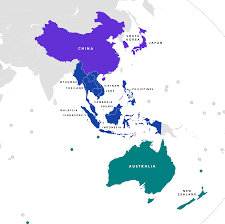
Fifteen Asian countries, including China, Japan, Korea, Australia, New Zealand and the 10 ASEAN members, signed the Regional Comprehensive Economic Partnership (RCEP) on November 15, after eight years of negotiations. Following the Trans-Pacific Partnership (TPP), RCEP is the second comprehensive trade agreement concluded since 2017 that does not include the United States. This post looks at RCEP’s very modest government procurement provisions and prospects for incorporation of more robust procurement rules and market access commitments.
After President Trump pulled the U.S. out of the TPP on his third day in office, its remaining members rallied to conclude the agreement, renaming it the Comprehensive and Progressive Trans-Pacific Partnership (CPTPP). Seven countries are parties to both regional trade agreements: Australia, Brunei, Japan, Malaysia, New Zealand, Singapore and Vietnam.
When the RCEP negotiations were launched in 2013, they did not include government procurement. Procurement was added in 2017. The resulting procurement chapter is very modest, but it is a beginning: no existing ASEAN FTA with other RCEP signatories includes any procurement commitments.
RCEP recognizes “the role of government procurement in furthering the economic integration of the region so as to promote growth and employment.” Its procurement chapter focuses on transparency of laws, regulations and procedures for central government entities and developing cooperation among the parties on procurement. The transparency obligation requires the parties to make procurement laws and regulations publicly available but only to try to do so for procurement procedures. Consistent with modern procurement practices, parties will endeavor to make procurement information available by electronic means and in English.
Under the cooperation provision, the parties may exchange information on procurement measures, provide training, technical assistance and capacity building, share information on best practices, including relating to small and medium enterprises, and on electronic procurement systems. The procurement obligations do not apply to RCEP’s three least development countries (LDCs): Cambodia, LAO PDR and Myanmar.
The Agreement's single market-access related obligation applies to procurement that “is expressly open to international competition,” which countries with closed procurement systems typically use where a good or service is not available from domestic sources. The RCEP only calls on the parties to conduct such procurement “in accordance with generally accepted government procurement principles as applied by that Party” to the extent possible. The procurement chapter is excluded from dispute settlement.
The lack of substantive market access commitments in RCEP is not surprising since China has yet to include any such commitments in its bilateral agreements. However, in FTAs with Australia and New Zealand, it committed to negotiate market access on government procurement after it completes its negotiations to join the WTO Government Procurement Agreement (GPA), which began at the end of 2007.
The procurement chapter's provision for a review every five years aimed at improvements to facilitate government procurement would provide an opportunity to add more extensive procurement rules and market access commitments once China completes its GPA accession.
When the RCEP parties are ready to embrace more extensive procurement commitments, the CPTPP would provide a relevant model with its overlapping members, its up-to-date procurement rules, broad market access commitments and, in particular, extensive transitional measures for its developing country members, especially Malaysia and Vietnam.
The RCEP is comprised of 20 chapters and four market access annexes with schedules on tariff commitments, specific commitments for services, reservations and non-conforming measures for services and investment and specific commitments on temporary movement of natural persons.
India participated in the RCEP negotiations until 2019 when the agreement was concluded. It dropped out due to concerns that its domestic industry would be swamped by Chinese imports. The RCEP signatories have left the door open for its return through accession “as an original negotiating State,” as soon as RCEP enters into force, in contrast to the general provision that opens RCEP to accession 18 months after its entry into force. RCEP will enter into force after at least six ASEAN members and three other parties ratify it.
Jean Heilman Grier
November 18, 2020
Related Posts
Government procurement: Key element in TPP; Missed opportunity in RCEP?

